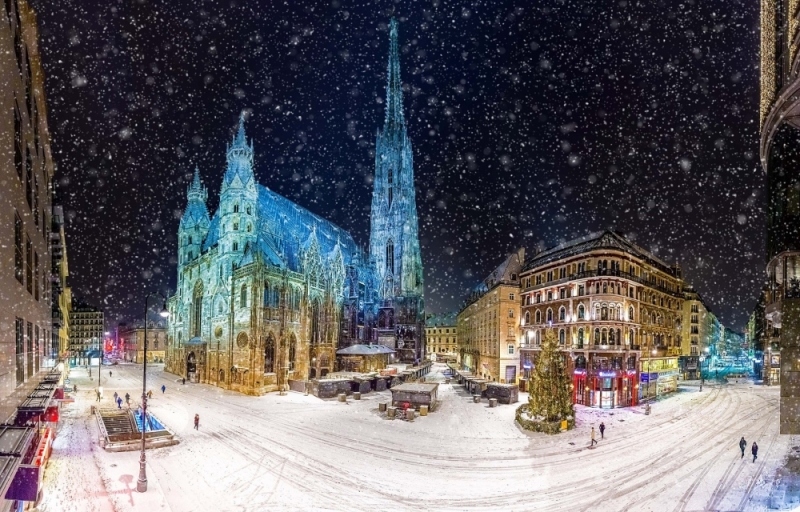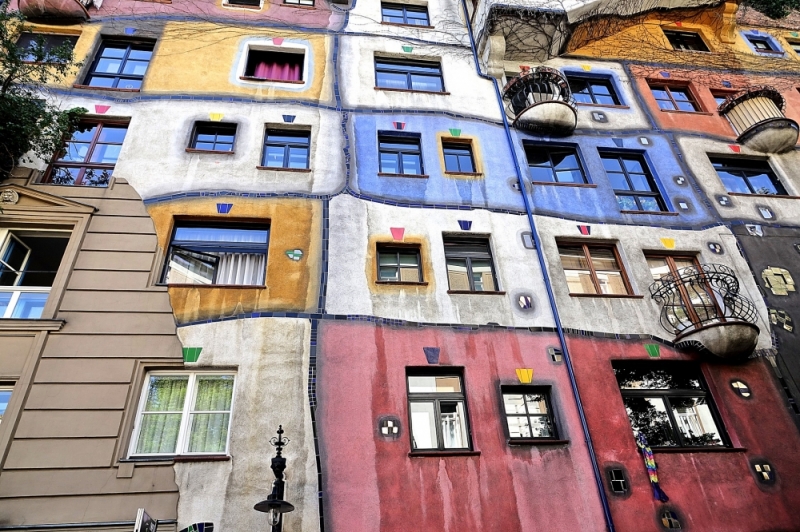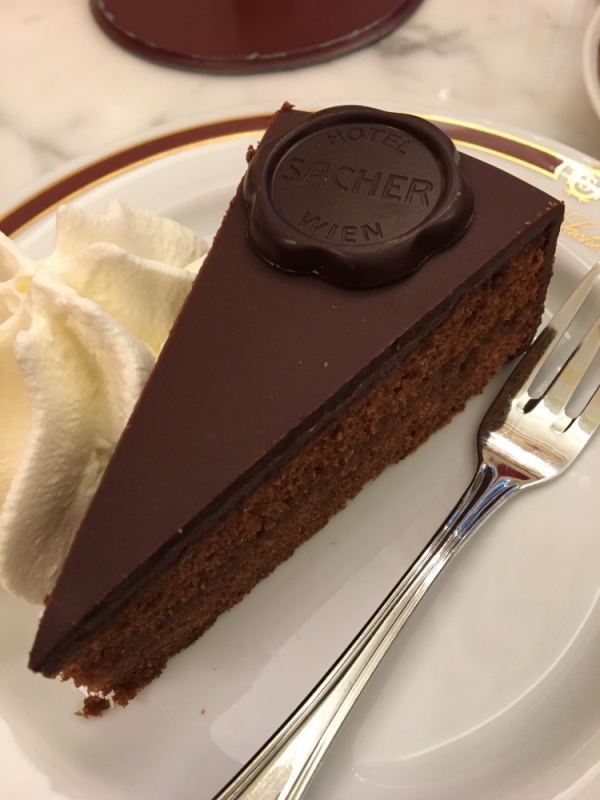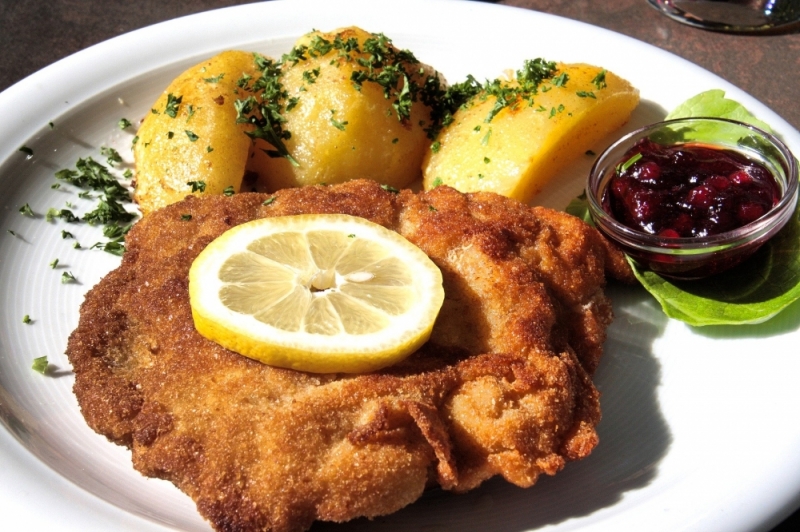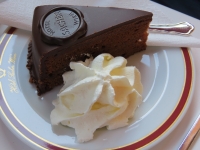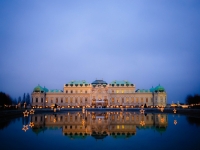Vienna and its origins
Vienna, located on the right bank of the Danube, is known as the cultural capital of Europe. It is a pearl that has remained intact over time, which still retains the features of the Habsburg era, that of the well-known Princess Sissi. No other empress is as famous as Sissi. Elizabeth of Bavaria moved to Vienna after her wedding to Emperor Franz Joseph and, to this day, the empress's imprint can be found in many places. What makes the Austrian capital fascinating is precisely the combination between imperial traditions and modernity, between classical music, modern music and the famous Viennese cafés. In short, this city will give you strong emotions. Vienna is located on the right bank of the Danube and its first human settlements date back to the Paleolithic era. The first to settle in 800 BC were the Celts and, subsequently, it became the seat of a Roman legion of the Emperor Augustus, who erected a fortified quadrilateral of walls in this place, which took the name of Vindobona. Later, it was destroyed by the Huns and in the 8th century, by order of Charlemagne, it became part of the eastern march. From 1278 Vienna was dominated by the Habsburg imperial house, with the regency of Rudolf I. With the rule of the Habsburgs, Vienna had its rise and in 1365 the University was also founded. It had an excellent development as an imperial capital and, after being freed from the Turks in 1683, thanks to the victory of Prince Eugene of Savoy, the city had considerable prestige during the empire of Maria Theresa (1740-1780), (in fact the 1754 census , recorded 175,000 inhabitants). The city was occupied during the Napoleonic era, but without losing its prestige as an imperial capital, despite the prestige of cities such as Berlin, Prague and Budapest, which gained importance in that period. The city regained its independence following the revolutionary uprisings of 1848 and, thanks to Emperor Franz Joseph I, once again enjoyed a period of rise. The old city was expanded and thanks to the creation of Ring avenues, communication with the peripheral neighborhoods improved and the appearance of the entire city was beautified. In 1918 it became the capital of Austria but, in 1938, it was annexed to Germany then governed by Hitler, only to regain its freedom in 1955, thanks to the State Treaty. In 1979, the UNO-City (UN City) was inaugurated, where important United Nations organizations are grouped. Today Vienna, the capital of Austria, is an autonomous federal state which, thanks to its 1.6 million inhabitants, represents 20% of the Austrian population.
What see
Vienna, in addition to being the world capital of music, is a small jewel where different styles combine: from the medieval to the liberty style up to examples of more recent art. There are over 27 castles in Vienna and more than 150 historic buildings. Vienna is a European capital rich in life, culture and tradition. There are large museums housed in the residences of the Habsburg dynasty, such as the Belvedere, the Museum of Art History, the Albertina and the Schonbrunn Castle. Here are some of the most famous works in the world, such as the kiss by Klimt. The Hofburg, the royal palace, was the home of the sovereigns who ruled the Austro-Hungarian Empire for 600 years, the Cathedral the place where they were crowned, the Crypt the place where they rest and the Chamber of Wonders, the place where their symbols of power are kept.
Within the walls of the Hofburg palace, the stories of the Habsburg family have crossed paths. This elegant palace, emblem of Viennese nobility, was for a long time the political center of the Austrian empire, while today it is the residence of the Austrian Federal President. The palace is a complex of buildings from different eras and, inside, houses important historical collections and cultural institutions including the Spanish Riding School and the Austrian National Library. Inside there are 18 rooms of the Royal Apartments, the Silverware Museum and the museum dedicated to Sissi, one of the most beautiful and discussed women of his time. Inside this majestic palace, there is also the Schatzkammer, the imperial treasure chamber where the sacred and profane treasure of the Habsburgs is kept. At the beginning of the eighteenth century, Prince Eugene of Savoy, following his victory against the Turks, ordered the construction of a summer residence, in the style of Versailles, called Lower Belvedere. From its terrace it is possible to admire the bell tower of S. Stefano while, on the left, there is the baroque palace of Prince Schwarzenberg, with its magnificent garden, which today is used as a hotel. The two castles are absolutely worth visiting, since they house three important museums: the Museum of Austrian medieval art, the Museum of painting and sculpture representing the Austrian Baroque period, among which we have: the Sala dei Marmi, the Galleria dei Marmi and the Golden Cabinet. In the upper room, however, we have the Austrian Gallery of the nineteenth and twentieth centuries. As for the 19th century, we recommend you visit the halls of the Viennese Biedermeier painters, among which there are also great works by Hans Makart, the master of Klimt. On the second floor there are the rooms of the Gustav Klimt collection, considered one of the greatest exponents of the Viennese Secession and interpreter of the Jugendstil, among which there is his famous work, the Kiss of Klimt.
Within the walls of the Hofburg palace, the stories of the Habsburg family have crossed paths. This elegant palace, emblem of Viennese nobility, was for a long time the political center of the Austrian empire, while today it is the residence of the Austrian Federal President. The palace is a complex of buildings from different eras and, inside, houses important historical collections and cultural institutions including the Spanish Riding School and the Austrian National Library. Inside there are 18 rooms of the Royal Apartments, the Silverware Museum and the museum dedicated to Sissi, one of the most beautiful and discussed women of his time. Inside this majestic palace, there is also the Schatzkammer, the imperial treasure chamber where the sacred and profane treasure of the Habsburgs is kept. At the beginning of the eighteenth century, Prince Eugene of Savoy, following his victory against the Turks, ordered the construction of a summer residence, in the style of Versailles, called Lower Belvedere. From its terrace it is possible to admire the bell tower of S. Stefano while, on the left, there is the baroque palace of Prince Schwarzenberg, with its magnificent garden, which today is used as a hotel. The two castles are absolutely worth visiting, since they house three important museums: the Museum of Austrian medieval art, the Museum of painting and sculpture representing the Austrian Baroque period, among which we have: the Sala dei Marmi, the Galleria dei Marmi and the Golden Cabinet. In the upper room, however, we have the Austrian Gallery of the nineteenth and twentieth centuries. As for the 19th century, we recommend you visit the halls of the Viennese Biedermeier painters, among which there are also great works by Hans Makart, the master of Klimt. On the second floor there are the rooms of the Gustav Klimt collection, considered one of the greatest exponents of the Viennese Secession and interpreter of the Jugendstil, among which there is his famous work, the Kiss of Klimt.
Schönbrunn Palace - Castle Theater - Carriage Museum
Schönbrunn Palace is one of the best known Austrian imperial palaces and is one of the most beautiful Baroque complexes in Europe. It once represented the summer residence of the Habsburgs and it seems that its name derives from "Bella Fonte". It was discovered by Prince Matthias during a hunting trip and today it is a World Heritage Site. The yellow palace (known as Schönbrunn yellow) was built at the behest of Maria Teresa and is surrounded by a 120-hectare park, designed in French style and open to the public in 1779. In the castle, in addition to the royal apartments, there it is the Castle Theater (the oldest theater in Vienna) and the Carriage Museum. The complex has a total of 1441 rooms: with the Imperial Tour it is possible to visit 22 of them, while with the Grand Tour it is possible to visit 40 of them. In the park there are numerous fountains, statues, fake Romanesque ruins and several attractions, including the labyrinth, the Serra delle Palme and the Tiergarten, the oldest zoological garden in Europe (dating back to 1752).
Cathedral of Santo Stefano
One of the beauties of the city not to be missed is the Cathedral of Santo Stefano , a real masterpiece of Gothic art. Outside you will be captured by the roof made up of 250,000 colored tiles, which reproduce the Austrian coat of arms and by the sumptuous bell tower, called Steffl (Stefanino). Instead, a Renaissance dome houses the Pummerein, the large bell that weighs over 20 tons. The Duomo can be accessed by passing through the Portal of the Giants, on whose sides there are the twin towers of the Pagans. Inside it is possible to observe different architectural styles, dating back to different periods: the central nave, the side chapels and the choir are in Gothic style, while the buildings were rebuilt in Baroque style. The remains of members of the Habsburg family are also kept in the cathedral. Mozart's wedding and funeral were also celebrated here.
Vienna Art History Museum
The Vienna Museum of Art History, also known as the Kunsthistorisches Museum, was commissioned by the emperor Franz Joseph and houses masterpieces dating back to every era. It is a neo-Renaissance style building, with a dome above which houses an important art gallery and several collections, including that of Ancient, Egyptian and Oriental Art, of Sculpture, of Decorative Arts and of Numismatics. Not to be missed is the Chamber of Art of Emperor Rudolf II, as well as the complex of exotic objects and the famous Cellini salt cellar. In the museum there are also numerous masterpieces by Rembrandt, Tintoretto, Tiziano, Dürer and Jacques-Louis David. Opposite the Museum of Art History, there is also the Natural History Museum, also built thanks to the project of Gottfried Semper and Karl Von Hasenauer and it is the largest collection in the world of works by Bruegel the Elder, including we find the "Tower of Babel", "Carnival and Lent meeting" and the "Return of the Hunters".
Albertina Museum - Prater
Another museum where you can immerse yourself in the artistic beauties is the Albertina Museum, which takes its name from its founder, Duke Albert of Saxony-Teschen. Inside there is one of the best collections in the world of graphic art, from the fourteenth century. to the present day. Among the emblems of the museum, there is Dürer's Hare and, given the vastness of the works, Albertina creates exhibitions dedicated to one or more of the famous artists. After deepening the artistic and architectural history of the city, we recommend you to visit the Prater , the famous park in the city center, which represents both a green oasis and an amusement park. The Prater is open from March to October, however the Ferris Wheel and some other attractions remain open throughout the year. It was once a reserve where emperors delighted in hunting, while today it is an amusement park that has over 250 attractions, where the Riesenrad, the famous Ferris wheel inaugurated in 1897, stands out.
Hundertwasser - Ringstrasse - MuseumsQuartier
If you want to immerse yourself in innovation and colors, don't miss the world of Hundertwasser , created by a sculptor, painter and architect outside the box. In fact, it gave birth to really bizarre constructions, but particular enough to deserve a visit. The Landstrasse district was once a run-down neighborhood before Hundertwasser made it a mix of colors and asymmetrical constructions. The Ringstrasse is, according to the Viennese, the most beautiful avenue in the world. It is about 5 kilometers long and is in the shape of a horseshoe. It was built by order of King Franz Joseph I of Habsburg. Its medieval walls were demolished to be replaced by a large tree-lined avenue, where the main city buildings were born, including the former Palazzo della Borsa, the Votivkirche, the University, the Parliament, the Town Hall, the History museums Natural, art history and the National Opera Theater. The urban structure was completely transformed, revisiting the main styles of the past. In 2001 the MuseumsQuartier was inaugurated, with a vast cultural offer: in fact it ranges from the works of Picasso and Warhol, to those of Egon Schiele, the greatest exponent of Austrian expressionism. You can also find the Museum of Contemporary Art (Kunsthalle Wien), that of Architecture (Architekturzentrum Wien) and the Museum for Children (ZOOM Kindermuseum). You can also visit the city, treating yourself to a suggestive boat trip on the Danube . There are several routes to go, including the NationalParkBoot which leads from Vienna to Lobau, a verdant plain which is part of the Donau-Auen National Park , which connects Vienna to Bratislava. The city has hosted incredible artistic personalities, including Mozart, Beethoven and Schuber t. The houses in which these well-known musicians lived have become museum houses, and a tour has also been created, that of the "places of musicians". Recommended, especially for families, is a visit to the zoo in Schonbrunn Castle, awarded four times as the best Zoo in Europe.
Movida and entertainment
Vienna is a city to visit even in the evening, beyond classical music and cultural events. It will be really impressive to admire the city when the sun goes down. If instead you visit the city in summer, at Rathausplatz, you can attend free screenings, very popular with locals. From 28/06 to 31/08 there are also events dedicated to jazz music. From 29 to 31 August, however, the Vienna Summer Break is held, which includes different musical genres. For jazz lovers, we recommend the Porgy & Bess Jazz Club, with a classic atmosphere and walls enriched with portraits of musicians. Another venue dedicated to Jazz is the Alberitna Passage an elegant club which, after dinner, turns into a DJ club. On the banks of the Donau Kanal, however, there are numerous interesting places: the Flex is one of the best stereo systems in the city, while the Pratersauna, obtained precisely from a sauna, is an interesting place where, during some evenings, the swimming pools are also opened. Many places are located in the Gurtel, in fact in late August there is also the Gürtel Night Walk. If you want to listen to classical music, you can buy tickets for the Straatsoper, where you can attend different shows. After the show, you can also take a walk and admire the other illuminated buildings of the Ringstrasse. The Natural History Museum will give you the opportunity to dine inside, while the Schönbrunn residence will give you the opportunity to spend a magical evening with a concert, dinner and coffee after visiting the palace. If you are not afraid of heights, you can also try the restaurant at the top of the Donauturm tower. If you want to relax, in the Oberlaa district, there are the thermal baths of Vienna. Before leaving the city, taste its specialties, such as the Sacher cake, the omelette, the goulash, the schnitzel (descendant of our cutlet), the apfelstrudel, the zwiebelsuppe (soup with white onions and butter), or the Wolfgang Amadeus Mozart, a dessert dedicated to the great musician.
Climate, curiosity and advice
Climate: Vienna has a continental climate, with cold winters and hot summers. The best time to visit is spring and the rainiest months are June and August. If you visit the city in winter, we recommend that you cover yourself well. In the summer, on the one hand, you should dress lightly, but don't forget to bring a raincoat with you, since in the summer there are sudden rains.
Curiosity: Austria is the European country with the lowest unemployment rate and has the lowest crime rate in Europe. So if you like this city, you could even go and live there!
Tips: as we said earlier, Vienna is in the top places in the world for quality of life. Civilization, however, is based on a series of unwritten rules, such as not boarding public transport without a ticket, not walking on cycle paths or, for example, leaving the left lane free on escalators. Respect the rules of civilization, and you will be in tune with this beautiful imperial capital.


